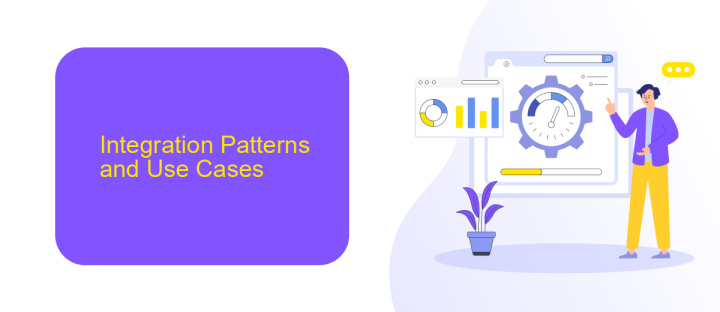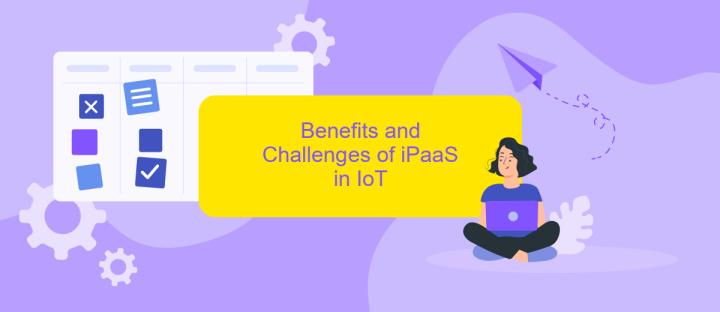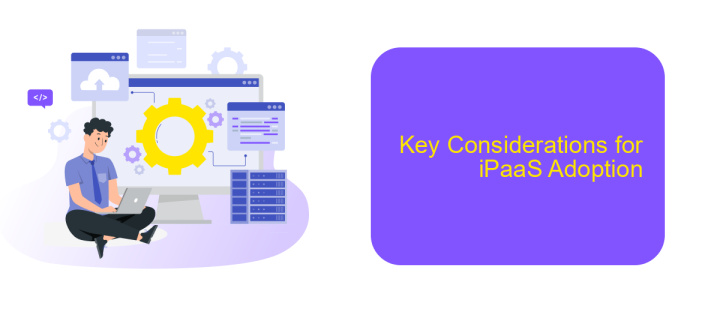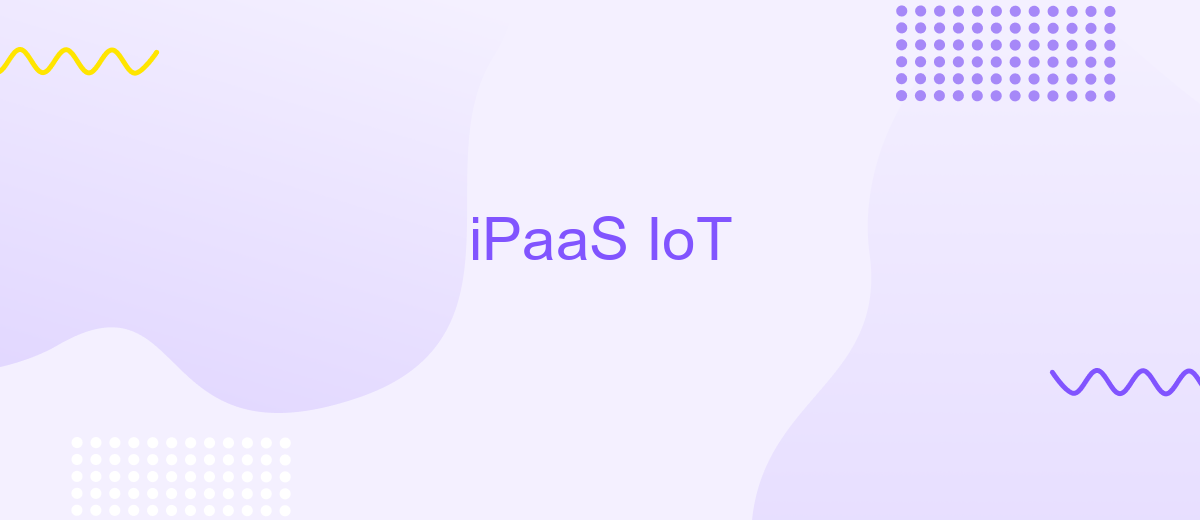iPaaS IoT
The integration of Internet of Things (IoT) devices with enterprise systems has become crucial for modern businesses. Integration Platform as a Service (iPaaS) offers a seamless solution to connect, manage, and analyze IoT data in real-time. This article explores how iPaaS enhances IoT capabilities, providing scalable, efficient, and secure integration options for organizations aiming to leverage IoT technology to its fullest potential.
Introduction to iPaaS for IoT
The integration of Internet of Things (IoT) with Integration Platform as a Service (iPaaS) is revolutionizing the way businesses manage data and automate processes. iPaaS solutions provide a seamless way to connect various IoT devices and applications, enabling real-time data exchange and enhanced operational efficiency.
- Streamlined data integration from multiple IoT devices
- Real-time analytics and monitoring
- Scalable and flexible infrastructure
- Automated workflows and processes
- Enhanced security and compliance
One notable service in this domain is ApiX-Drive, which simplifies the integration of IoT devices with various applications and services. By using ApiX-Drive, businesses can automate data flows and ensure that their IoT ecosystems operate smoothly and efficiently. This not only reduces manual intervention but also helps in making informed decisions based on real-time data insights.
Integration Patterns and Use Cases

Integration patterns in iPaaS IoT involve various strategies to connect and synchronize devices and applications. Common patterns include point-to-point integration, hub-and-spoke, and publish-subscribe models. Point-to-point integration directly links two endpoints, suitable for simple use cases. Hub-and-spoke centralizes data through a single hub, ensuring data consistency and easier management. Publish-subscribe allows devices to communicate through a messaging system, ideal for dynamic and scalable environments.
Use cases for iPaaS IoT integrations are vast, ranging from smart home automation to industrial IoT. For instance, in smart homes, iPaaS can integrate various sensors and devices for seamless automation and monitoring. In industrial settings, it enables real-time data collection and analytics, optimizing operations and maintenance. Tools like ApiX-Drive facilitate these integrations by providing a user-friendly platform to connect disparate systems without extensive coding, ensuring efficient and reliable data flow across IoT ecosystems.
Benefits and Challenges of iPaaS in IoT

iPaaS (Integration Platform as a Service) is revolutionizing the IoT landscape by providing seamless integration solutions. One of the primary benefits is the ability to connect disparate IoT devices and systems, streamlining data flow and enhancing operational efficiency. Additionally, iPaaS platforms like ApiX-Drive offer user-friendly interfaces, making it easier for businesses to set up and manage integrations without extensive technical knowledge.
- Scalability: iPaaS solutions can easily scale with the growing number of IoT devices.
- Cost Efficiency: Reduces the need for custom integration solutions, saving both time and money.
- Real-time Data Processing: Facilitates real-time data analytics, crucial for IoT applications.
- Security: Offers robust security protocols to protect sensitive IoT data.
- Interoperability: Ensures seamless communication between various IoT devices and systems.
However, there are challenges to consider. Integration complexity can increase with the diversity of IoT devices and protocols. Ensuring data security and privacy is another significant concern, given the vast amount of data generated by IoT devices. Additionally, businesses must invest in reliable iPaaS solutions like ApiX-Drive to ensure smooth and efficient integrations. Despite these challenges, the benefits of iPaaS in IoT far outweigh the potential drawbacks, making it an essential tool for modern businesses.
Key Considerations for iPaaS Adoption

When adopting an iPaaS (Integration Platform as a Service) for IoT (Internet of Things) solutions, it is crucial to consider several key factors to ensure successful implementation and operation. One of the primary considerations is the platform's ability to handle the scale and complexity of IoT data. This includes evaluating the data processing capabilities and the ease of integrating various IoT devices and protocols.
Another important aspect is the security measures provided by the iPaaS platform. IoT systems often deal with sensitive data, making robust security protocols essential. Ensure that the platform offers encryption, authentication, and compliance with industry standards.
- Scalability and performance of data processing
- Security features and compliance
- Ease of integration with existing systems
- Support for various IoT protocols
- Cost-effectiveness and pricing model
Services like ApiX-Drive can greatly simplify the integration process by offering pre-built connectors and a user-friendly interface. This can reduce the time and effort required to set up and maintain integrations, making it easier to focus on the core aspects of your IoT projects. Consider these factors carefully to ensure a smooth and efficient iPaaS adoption for your IoT needs.
Future Trends and Outlook
The future of iPaaS IoT is poised for significant advancements, driven by the increasing demand for seamless integration of various devices and platforms. As industries continue to embrace IoT solutions, the need for efficient and scalable integration platforms becomes paramount. Emerging trends indicate a shift towards more automated and AI-driven integration processes, reducing the complexity and time required for manual configurations. This evolution will enable businesses to focus more on innovation and less on technical hurdles, ultimately accelerating the adoption of IoT technologies.
Moreover, services like ApiX-Drive are set to play a crucial role in this landscape by offering user-friendly tools for setting up integrations effortlessly. ApiX-Drive's capabilities in automating workflows and connecting diverse applications will be instrumental in addressing the growing complexity of IoT ecosystems. As these platforms evolve, they will likely incorporate advanced analytics and machine learning algorithms to provide deeper insights and predictive maintenance, further enhancing the value proposition of iPaaS IoT solutions. The future looks promising, with iPaaS IoT becoming more intuitive, powerful, and integral to digital transformation strategies across various sectors.
- Automate the work of an online store or landing
- Empower through integration
- Don't spend money on programmers and integrators
- Save time by automating routine tasks
FAQ
What is iPaaS in the context of IoT?
How does iPaaS benefit IoT implementations?
What are the key features to look for in an iPaaS solution for IoT?
Can iPaaS be used to automate workflows in IoT systems?
How do I get started with implementing iPaaS for my IoT project?
Apix-Drive is a simple and efficient system connector that will help you automate routine tasks and optimize business processes. You can save time and money, direct these resources to more important purposes. Test ApiX-Drive and make sure that this tool will relieve your employees and after 5 minutes of settings your business will start working faster.


